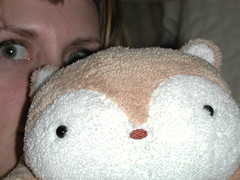March 10, 2006
Art and the Everyday
In a previous post there was a discussion about the purpose of art and whether it still reaches for transcendence or is entrenched in the mundane. Nadine Wasserman defends the mundane, offering the argument that art as an expression of everyday things is, in other words, art inseparable from life, a tradition that reaches back into tribal cultures.
She posits that 20th century art has been preoccupied with “the collapse of the boundary between art and life.” And yet in ancient cultures there was no boundary, art was a part of life and every member of the group took part in the arts of making music and decorative art. I find this especially fascinating because in the Japanese language the words used to describe the fine arts, 芸術 or 美術 (geijutsu or bijutsu)、are relatively new to the language, not an inherent part of the culture, having been introduced after the exposure to Western cultures.
Wasserman goes on to talk about the language of art and how it attempts to convey what is completely subjective, “as a form of interpretation of lived experience,” which is something Aaron was touching on in his comment to the previous post. Wasserman points out that the problem with trying to convey a subjective experience in this day and age is that
...communication is complicated further by an ever-expanding global community in which people encounter a multiplicity of cultures, a multiplicity of values…
In many ways, however, marketing has overcome these difficulties through the use of brand recognition (check this link). Of course advertisements aren’t trying to get across any tough or sublime concepts, but perhaps this is our common experience, a way of bridging those gaps of communication and culture.
Much of the art that fascinates me, particularly coming from Japan, embraces the methods of mass-marketing in order to appeal to a broad demographic, whole-heartedly accepting, albeit consciously, the commodification of their images and icons. Artist Takashi Murakami, creates characters with the intention of rivalling the brand recognition of Mickey Mouse.
This is a blatant disregard for the boundaries of art, those entrenched values that uphold that art should be separate from life and society, somehow untouched and transcendent. Wasserman talks about an “optimistic cynicism” that many artists have toward the hyper-realist, media saturated world we live in. This type of art, indistinguishable in its method and use of media from mass-marketing, shows a further breakdown between art and life, reality and illusion.

